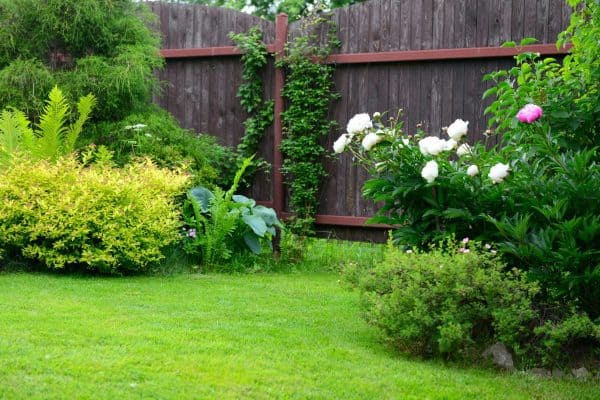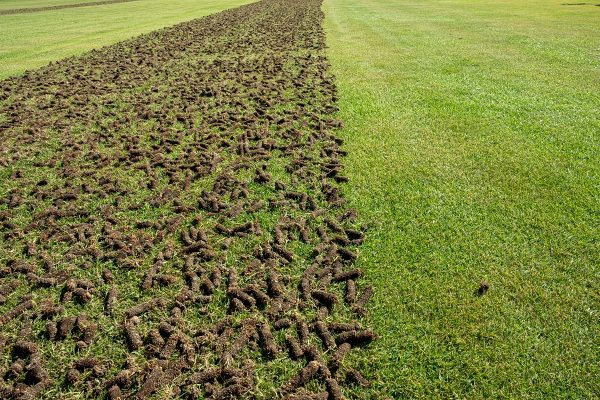If you don't want your coffee grounds to go to waste, you might be curious about what trees and shrubs like them so you can use the coffee grounds to enhance growth. So, we looked for trees and shrubs that like coffee grounds and made a list; here is what we came up with.
Here is a list of trees and shrubs that like coffee grounds:
| Trees | Shrubs |
| Citrus Tree Avocado Tree Mango Tree Peach Tree |
Hydrangeas Rhododendrons Blueberries Roses Lily of the Valley Hollies Azaleas Camellias Duke Highbush Blueberries |
Keep reading to learn how to apply coffee grounds to your trees and shrubs. We'll also discuss the pros and cons of using coffee grounds. Additionally, we'll cover when you should apply them as fertilizers to your plants.
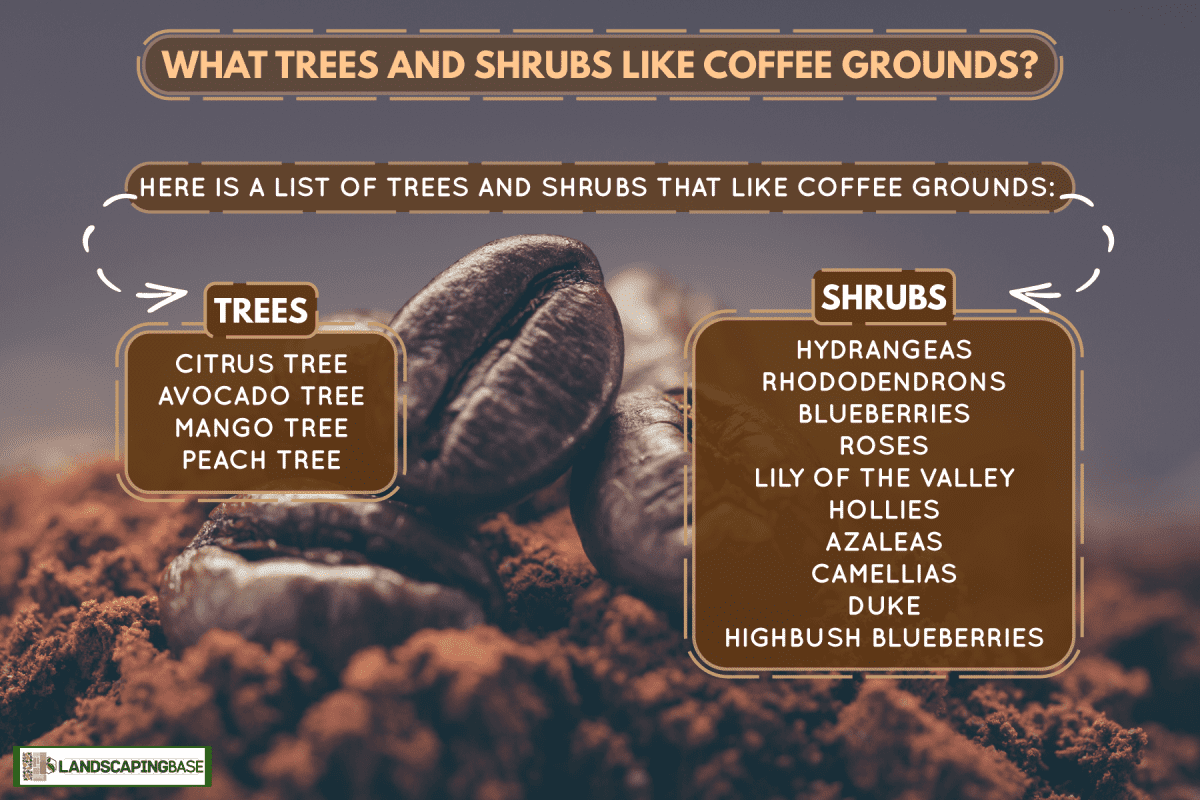
How To Apply Coffee Grounds To Fruit Trees?
The way to apply coffee grounds to fruit trees depends on the amount you have. Here's how you can do it:
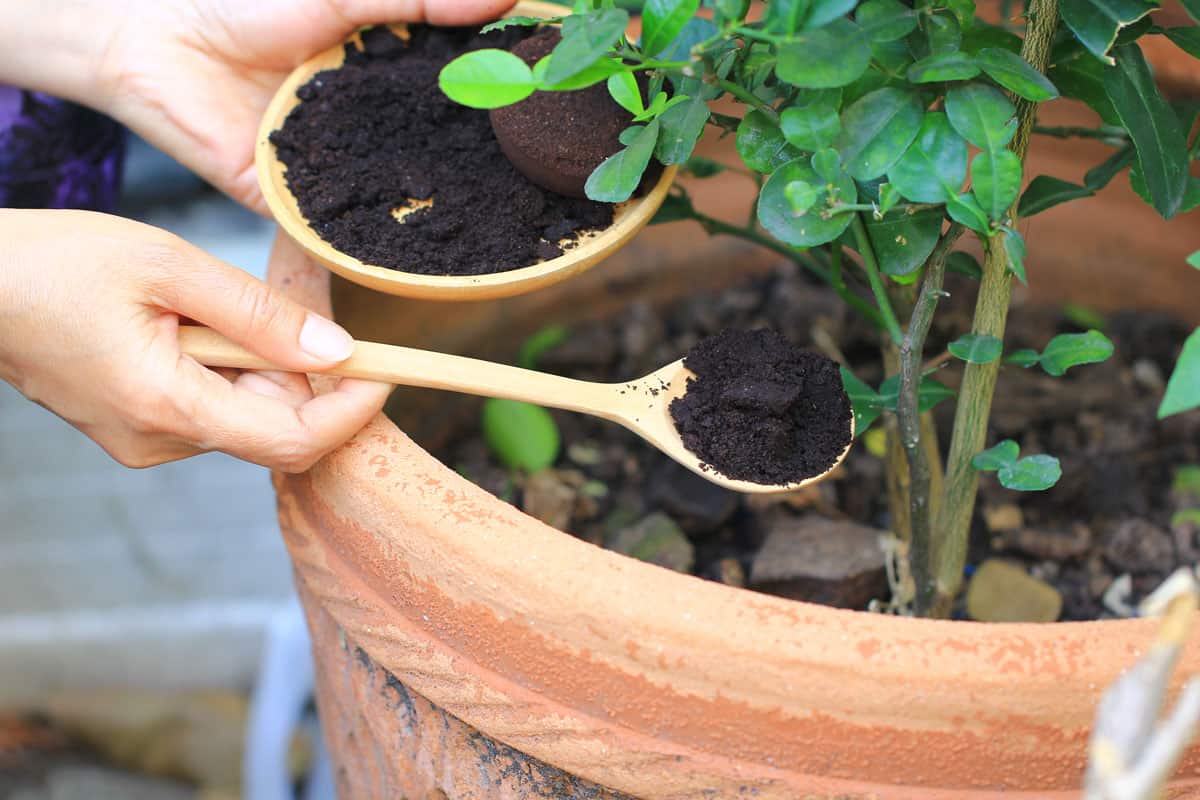
Direct Application To Soil Surface
In general, you're safe using a modest amount of coffee grounds on the soil's surface. Just keep in mind that touching the tree's trunk could spread disease. A reasonable spacing is to keep the grounds at least three inches away from the trunk.
To prevent the coffee grounds from clumping and preventing the soil from absorbing water and air, spread the grounds out across the soil as well. Clumped, damp coffee grounds can spread mold to the soil or the tree.
Composting Or Mulching
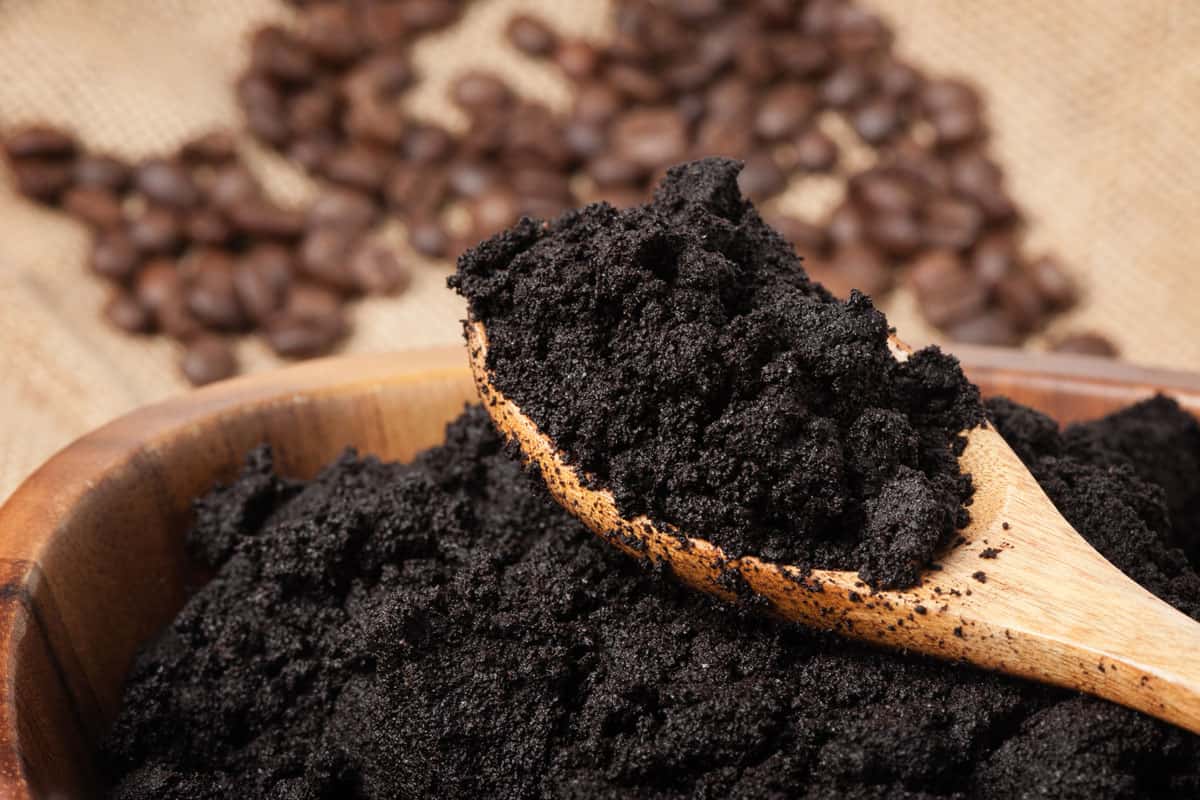
On the other hand, if you have a lot of coffee grounds, think about composting them or combining them with mulch. Mulches made of pine needles, bark, or leaves can be used. You can always compost the coffee grounds before applying them to your fruit trees. This will reduce the acidity and caffeine content.
How To Apply Coffee Grounds To Shrubs?
Some gardeners advise sprinkling your used coffee grounds in the soil adjacent to the plant, but others caution you against doing so because the high nitrogen content could potentially cause the plants to burn and die. Use a little more than a cup for each shrub.
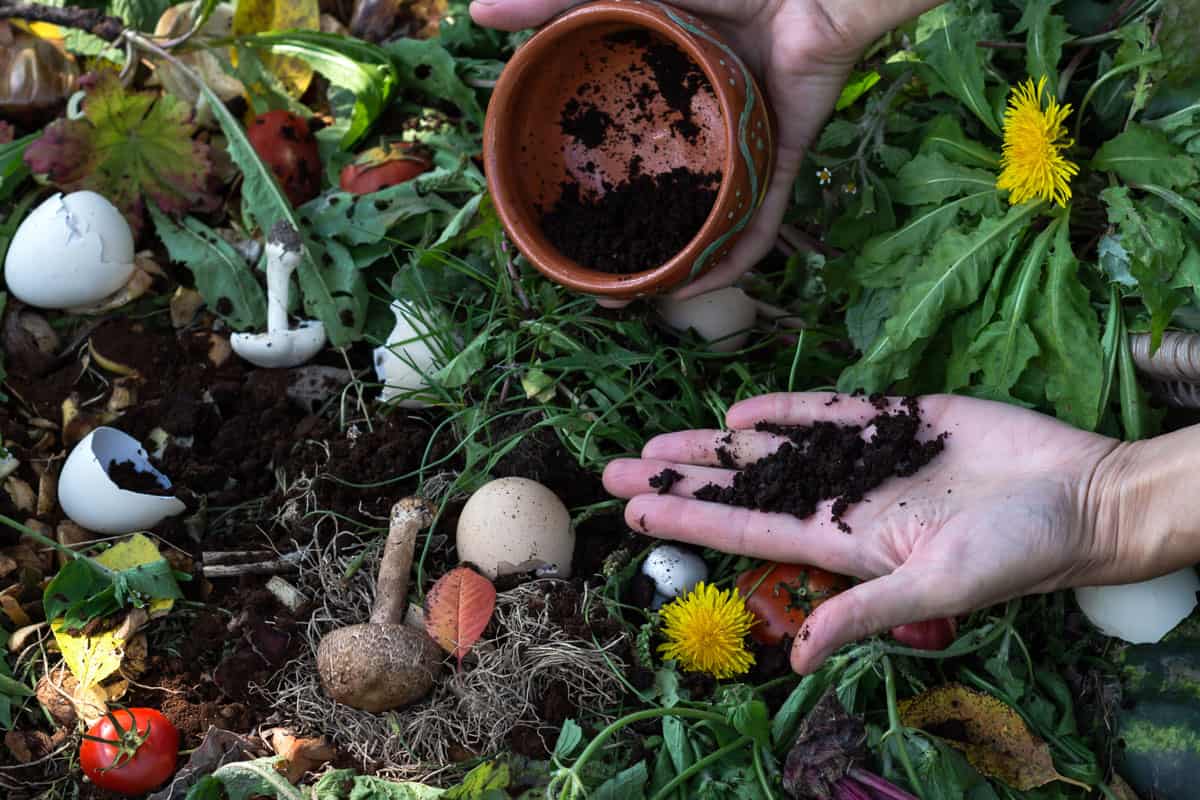
As an alternative, you could hydrate the bushes with a mixture of one cup of coffee grounds and one gallon of water per bush to make your roses, for instance, more vibrant and lovely. If you have prepared coffee compost, you can also utilize it.
What Are The Pros And Cons Of Using Coffee Grounds As Fertilizers?
Coffee grounds are the leftovers from brewing coffee that you discard. If you make your own at home, you could carry the used coffee grounds to your backyard. However, it's crucial to be aware that using coffee grounds could have some drawbacks as well.
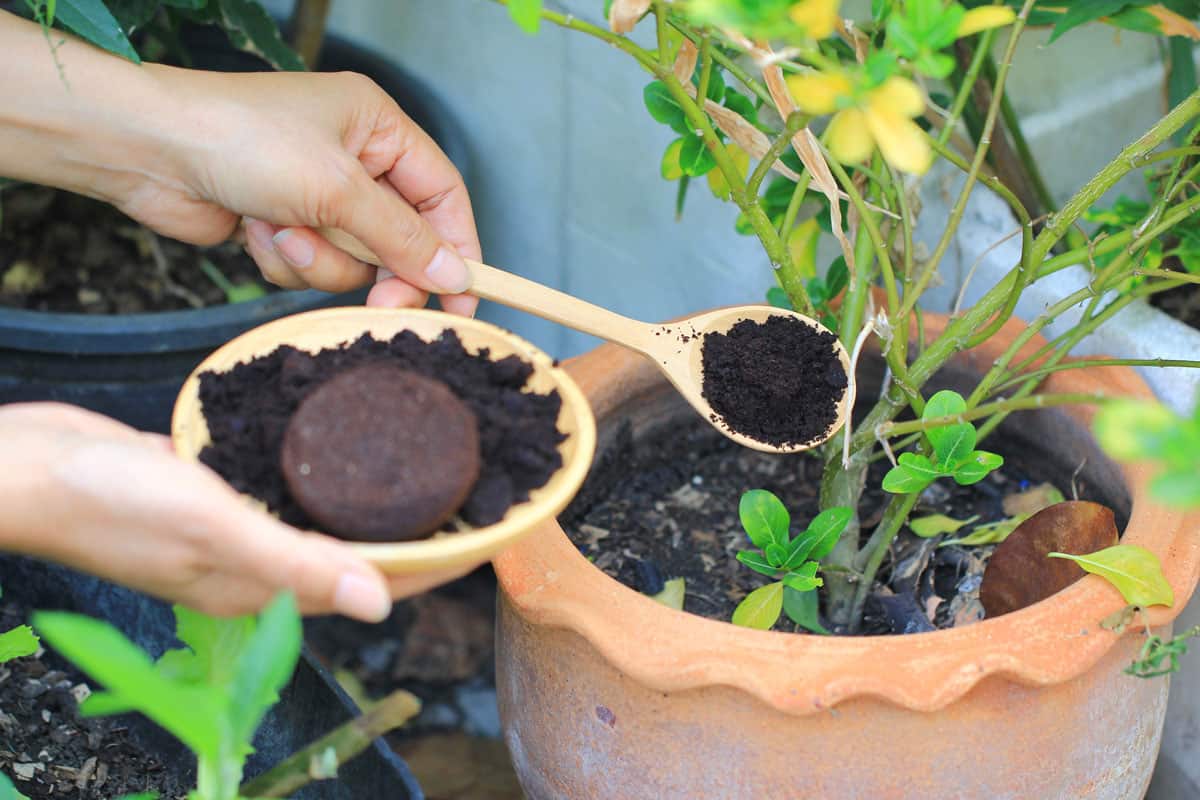
Here are the pros and cons of incorporating coffee grounds into your garden:
Pros
Discouraging Some Animals From Destroying Plants
One of the most popular uses for coffee grounds in gardens is to scare away animals that might attempt to eat the plants or injure them. Many individuals discover that coffee grounds are effective at keeping cats, snails, and other vermin away. Because they eat the foliage and harm the plants, these creatures are a major issue for gardens.
The primary issue with cats is that they frequently poop or spray urine around and use gardens as burial grounds. For gardeners, having neighbors' cats visit their gardens when they don't even own the cats themselves is immensely aggravating.
Not only does the waste undo all of your hard work, but cat poop and urine are harmful if consumed.
It's A Great Mulch Material
If combined with chopped vegetables, leaves, and other organic elements, coffee can be used as mulch. It helps prevent evaporation, so your soil won't lose as much moisture if you combine everything and spread it on top of your soil. Mulch aids in the soil's ability to retain heat in the winter and coolness in the summer.
The use of coffee grounds as mulch is acceptable. But you shouldn't just use coffee grinds. Always combine them with another organic material; if used alone, coffee grounds might prevent soil from getting any water at all, resulting in a dry garden.
Acts As Slow-Release Fertilizer
Coffee grounds release nutrients extremely slowly, making them a highly effective fertilizer. Used coffee grinds have micronutrients in addition to potassium, phosphorous, and a sufficient quantity of nitrogen.
These are all necessary nutrients for the well-being of your plants. You may provide plants with the nutrients they require by incorporating coffee grounds into your soil.
Your plants' roots won't acquire nutrients immediately because of the slow-release procedure; instead, they will do so gradually as the grounds decompose. Because of all of this, coffee grounds make a great gradual fertilizer.
It Encourages Worm Population
Worms enjoy consuming coffee grounds as food, according to several gardeners. The worm population in your soil might expand as a result of using coffee grounds in your garden, which is important for the health of plant roots.
Add coffee grounds to your worm bin every week or so. Just be careful not to introduce too many at once since the acidity can irritate your worms. For a tiny worm bin, around a cup of coffee grounds, every week is ideal. Earthworms in your soil will be more attracted to your garden when you use them in combination with the soil as fertilizer, in addition to utilizing coffee grounds in your worm bin.
Improved Soil Drainage
Coffee grounds are an organic substance, and organic substances contribute to raising the soil's quality. This makes sure that water doesn't pool around the roots of your plants as you gradually increase the amount of organic material.
Adding some coffee grounds occasionally is a terrific method to increase the quantity of organic material in your soil; just make sure you mix your grounds with the soil very well because too much water leads to rotting and inhibits appropriate plant growth.
Cons
Might Inhibit Plant Growth
There is still caffeine in coffee grounds, and this caffeine prevents both mature plants and seedlings from growing properly. It's advisable to keep coffee grinds away from any young plants or newly planted seeds in particular.
New plants can have their roots destroyed by coffee, which causes them to die before they have a chance to develop much. Even mature plants are susceptible to the same occurrence. Caffeine can have detrimental effects on plants that have already had time to develop as well as inhibit seedlings from becoming established.
Once roots have been established, the coffee grounds' caffeine may prevent future growth, causing the plant to become stunted.
Though grounds are less likely to be detrimental in this situation than they are with seedlings, it is still important to take this into account, particularly if you have mature plants in your yard and don't want to take a chance with them.
Coffee's Antibacterial Qualities Might Kill Beneficial Bacteria
Soil contains many different varieties of beneficial microorganisms, which keep illnesses and pests from penetrating your garden. When it comes to the health of your soil, antibacterial characteristics can lead to huge problems—and coffee contains antibacterial properties.
Although these qualities are generally advantageous, your soil may suffer as a result.
By adding antibacterial elements to your garden, you run the risk of wiping out all the beneficial bacteria and making the soil more susceptible to diseases and pests in the future.
Dry Coffee Grounds Can Form A Solid Barrier
Coffee grinds are made up of tiny particles. When these particles dry out, they become tightly packed together and create a sturdy barrier.
By adding too many coffee grounds to your garden, you risk giving it a clay-like texture. A stunted garden results from this clay texture's failure to supply plants with the nutrients and moisture they require.
Overly compacted coffee grounds build a solid barrier on top of your soil. Plants will wither since water won't get through. For this reason, adding coffee grounds in a particular way is essential rather than just tossing them on top of everything.
When Should You Add Coffee Grounds To Your Plants?

Coffee grounds typically take two to three months to break down, so the best time to add them to your compost pile is in the fall. Fruit trees will become more active and will benefit more from the additional nutrients after a few months and after the previous frost.
However, you can add coffee grinds to your garden at any time if you live in a region with year-round growing conditions and have tropical, evergreen fruit trees like citrus, avocado, and banana.
In Closing
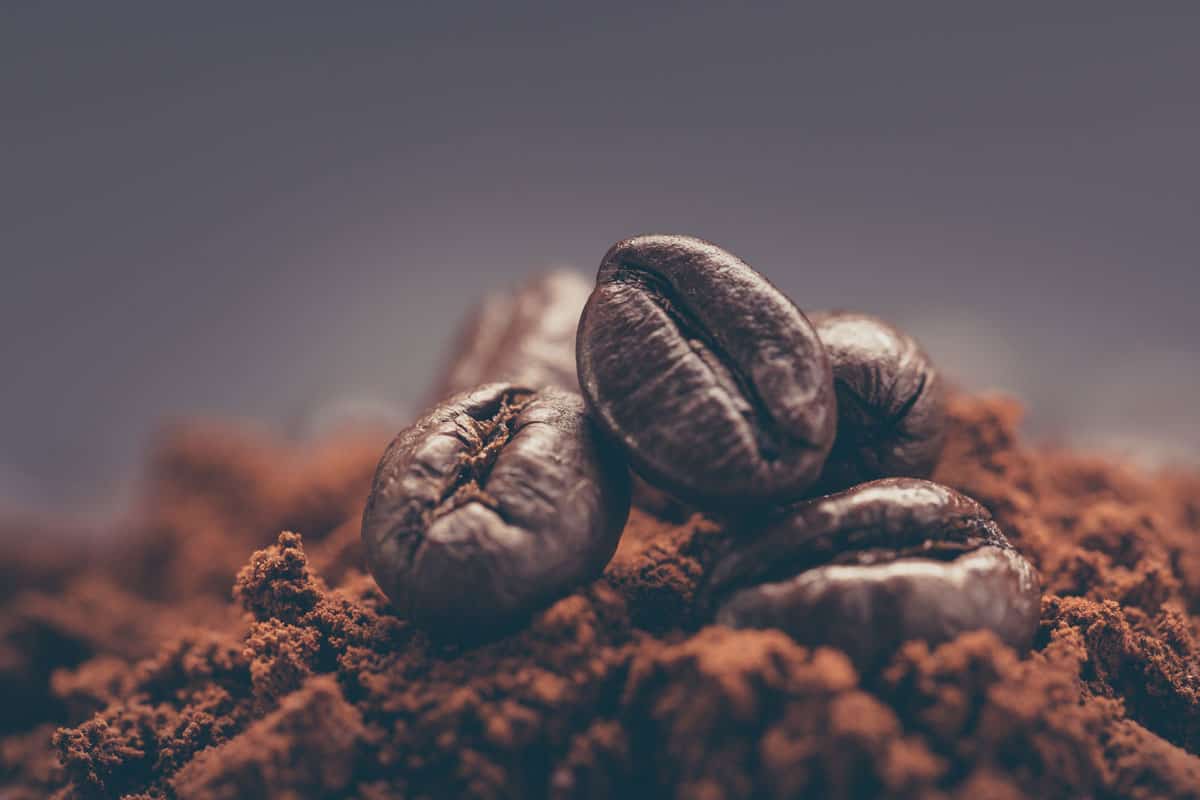
There are quite a few trees and shrubs that like coffee grounds. But although coffee grounds provide a great number of advantages, you should still be cautious when you apply them.
Furthermore, you should also be careful about applying fresh ground coffee to your plants since they contain higher caffeine concentrations than used grounds.
If you enjoyed this article, you can check out the others here:

